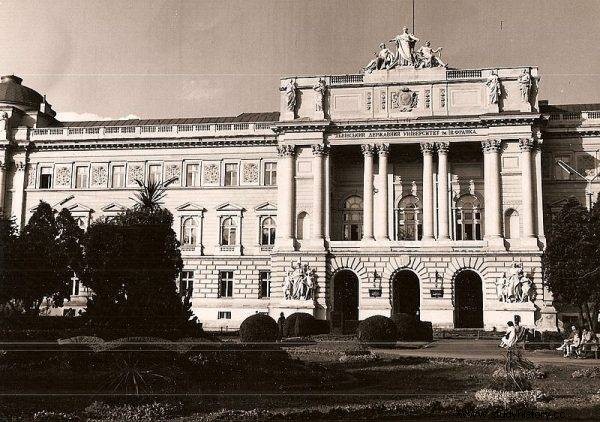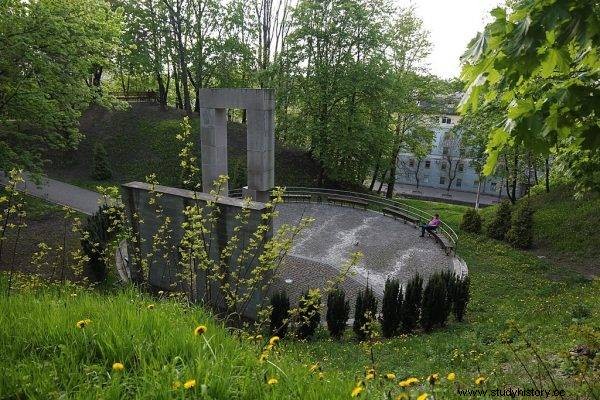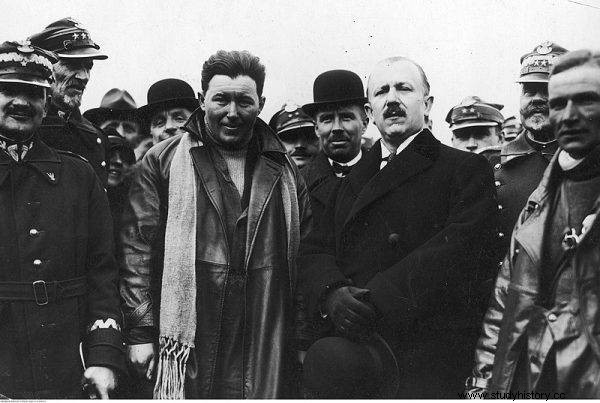What were the Germans guided by when murdering Lviv professors in 1941? After all, there were also specialists wanted by the Nazis after the crime.
On June 30, 1941, the German army entered Lviv. Contrary to the expectations of some Poles who recall the Austrian times, the Germans showed their murderous face very quickly . At first they directed repression against the elite.
On July 2, before noon, they imprisoned prof. Kazimierz Bartel, Prime Minister during the Second Polish Republic. His wife and daughter were thrown out of the apartment. On the night of July 3–4, several groups of SS men, policemen and gendarmes began arresting university professors. In addition to the professors, all men who had reached the age of 18 were taken away. Together with prof. Roman Longchamps de Berier, the last rector of the Jagiellonian University, the torturers took his three sons, aged 18 to 25. Prof. Zygmunt Albert recalled:
In general, there was a rush, they were ordered to quickly dress (some professors were already asleep), a superficial search was usually carried out, robbing gold, foreign currencies, and other valuables and in one case, a typewriter. The commanders of the groups carrying out the arrests knew well the fate of the detained by their professors and their sons.

The arrested scientists were employees of three universities in Lviv:the Jan Kazimierz University, the Lviv Polytechnic and the Academy of Veterinary Medicine.
During the arrests, the Germans behaved very differently. Sometimes correctly, in other cases by tormenting the arrested or looting their property.
Who were the victims?
The arrested scientists were employees of three universities in Lviv:the Jan Kazimierz University, the Lviv Polytechnic and the Academy of Veterinary Medicine. At night, they were taken to the Abrahamowicz Dormitory, where the temporary seat of the Gestapo was located. They were not questioned and no charges were brought against them.
On the morning of July 4, the professors and other arrested (family members and friends) were transported to the Wuleckie Hills. Fours were placed over the previously dug pit and shot. The last victim, as reported by witnesses, was the woman in black, who had problems reaching the place of execution . She was one of the three murdered women then.
Poles were shot by a special unit of the Einsatzkommando. The execution was supervised by SS-Brigadefuehrer Eberhard Schoengarth. 40 people were killed then by German bullets. Probably the next day, the Germans murdered doc. Stanisław Mączewski. Soon after, professors Henryk Korowicz and Stanisław Ruziewicz lost their lives. Prof. Bartel was murdered on July 26.
Why them?
"Many Poles asked where the Germans had the list of professors killed," wrote Zygmunt Albert. "It is not important to the whole matter, because you could get names with addresses, for example, from a pre-war telephone directory." Fortunately, Albert concluded, there were only 25 professors on the list. After all, the University itself had 158 associate professors and professors and there is also the enormous University of Technology, the Academy of Veterinary Medicine and the Academy of Foreign Trade.

The tragedy of Lviv professors is commemorated by a monument erected on the initiative of the local governments of Lviv and Wrocław.
Moreover, the Gestapo after that July night was looking for at least two people who had died during the war (ophthalmologist prof. Adam Bednarski and dermatologist prof. Roman Leszczyński). It can be concluded that the list was created in Krakow. As the border was cut off from Lviv, it was not known who had lost their lives in the meantime.
It seems most likely that the Krakow Gestapo, even before the outbreak of the German-Soviet war, demanded from the Ukrainians - Lviv students or university graduates - to provide the names and addresses of professors they knew. Hence a fairly short list.
What was the motive for this murder?
This was considered by, inter alia, prof. Czesław Madejczyk. He concluded that the motive for the murder of the Lviv professors ... remains unknown. Governor-General Hans Frank certainly wanted to avoid the publicity brought about by the arrest of Krakow professors . Frank insisted that imprisoned scientists should not be sent to concentration camps. At that time, the Germans were implementing a plan to destroy the Polish elite.
Why was this particular group chosen and the vast majority of scientists left alone? There would be no problem expanding your list of potential victims - their data was for example in university information brochures. The murdered professors were not ascribed neither Bolshevik nor anti-Ukrainian sympathies.

On July 2, the Germans imprisoned prof. Kazimierz Bartel, Prime Minister during the Second Polish Republic.
Moreover, the knowledge of some of them could be useful to the Germans. Among the victims was, among others head of the Department of Oil and Natural Gas Technology of the Lviv University of Technology prof. Stanisław Pilat. A few days after his death, the German authorities began looking for him, wanting to use his experience. Finally, no similar action was carried out in Vilnius, noted Czesław Madejczyk.
In order to cover up the traces of the murder, the Germans exhumed the bodies of the murdered. They were transported to the Krzywczycki Forest and on the next day, October 9, they were thrown into several hundred other corpses and burned together on a huge pyre . The preserved remains of the bones were ground in a gravel mill and scattered along with the ashes in the surrounding forest.
After the war, German courts ruled that specific Germans, named by name, were responsible for the murder of Lviv professors. Immediately after the war, a modest monument was erected in Soviet Lviv. Now the tragedy of Lviv professors is commemorated by a monument erected on the initiative of the local governments of Lviv and Wrocław.
Bibliography
- Zygmunt Albert, The torment of the Lviv professors in July 1941 , lwow.home.pl.
- Czesław Madejczyk, Murder of professors, Review, July 23, 2001.
